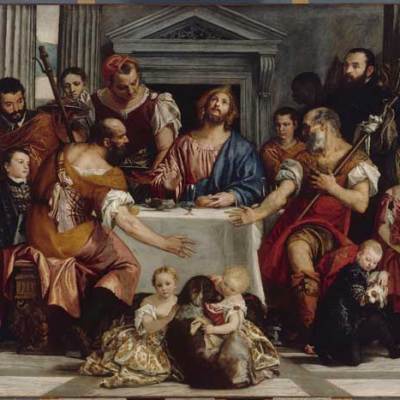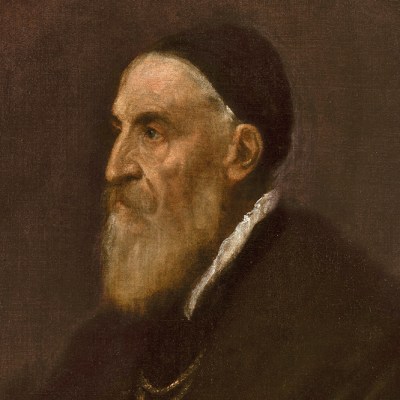It’s all about the dogs, of course. Or at least it could be, depending on how you look at Veronese’s work. There is something peculiar about the fame of Veronese. His paintings are so lovely to look at, his approach to colour so successful, that he should really be as famous as Titian – and yet, he’s not. If anyone knows anything about him as a person, or rather as Paolo Caliari, it’s that he was a nice guy or ‘famous for his praiseworthy actions’, as his biographer Carlo Ridolfi put it in 1648. But not many people know very much about him at all.
A trip to Madrid is an opportunity to take stock of the work of Veronese at the Prado. In what is the culmination of a 25-year project dedicated to artists of the Venetian Renaissance, the exhibition ‘Paolo Veronese (1528–1588)’, curated by the director of the Prado, Miguel Falomir, and Enrico Maria dal Pozzolo, a professor at the University of Verona, is currently on show until September. It follows ‘The Bassanos in Golden Age Spain’ (2001), ‘Titian’ (2003), ‘Tintoretto’ (2007) and ‘Lorenzo Lotto: Portraits’ (2018). It is the title of the first of these exhibitions that provides a clue to this extraordinary run of exhibitions: the Prado has an exemplary selection of works from the Venetian Renaissance that makes it a natural authority on this period. In many ways this all leads back to Titian. His portraits of Charles V stand at the centre of the Prado’s collection, just as Titian himself stands at the centre of this period of Italian art history. Veronese, however, declined an invitation from Charles V to come to Spain, preferring instead to complete a commission from the Doge.
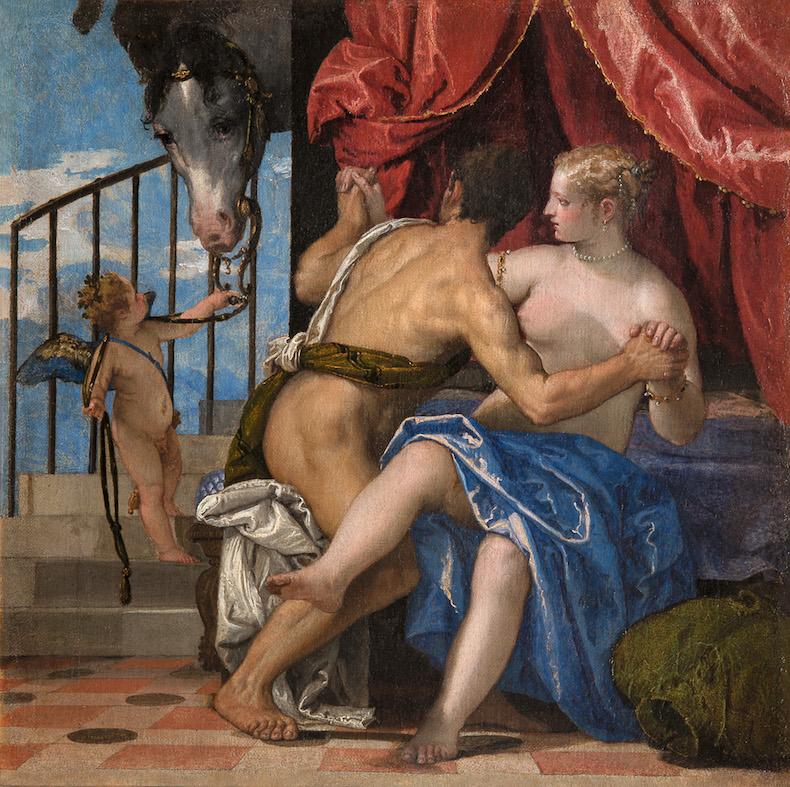
This is a major undertaking – there are 105 works in the show, of which almost three quarters are loans – and one that works in congruence with the demanding architecture of the Prado’s temporary exhibition space rather than against it. There is space here to represent Veronese’s large, extravagant paintings as well as some of his more intimate works. At the start of his career Veronese was known as Paolo Spezapreda, the stonecutter, and the crisp lines demanded by that training made their way into his early paintings. Take, for example, Saint Menna (1558–61), in which the Coptic saint, dressed as a soldier, stands in a niche, the dull grey of the stone emphasising the brightness of his armour, a gun-metal colour brought to life by a fierce dash of white across the front of the breastplate. The extravagant red of the fabric wrapped around him makes the metal shine even more brightly. Seeing it up close, what is most striking is the casualness of it all. The brushwork is loose and quick but never out of control. It is, like the dogs that appear under Veronese’s feasting tables, a power that is controlled for the pleasure of everyone around.
There is undoubtedly something worldly as well as divine about Veronese. He may well be an artist of allegory, myth and divinity, but his art is rooted in the world around him, too. The decanters in front of Jesus in Supper at Emmaus (1565–70) are the finest products of Murano rather than the earthenware an archaeologist might expect; the kilim that is on the table underneath the perfectly laundered linen cloth is another sign that Veronese takes his table dressing seriously, if not his historical accuracy. This attention to the details and riches that surrounded Veronese and that he places in his work is given further emphasis by a section of the exhibition that presents such fineries in the flesh: rock crystal cutlery from the Musei Civici in Venice, a blown-glass goblet and an extraordinary silver ewer and basin from the V&A gesture at the fineness of the craft and lavishness that Veronese’s commissioners would have enjoyed.

Of course, Veronese was in the business of making it real. The many visitors to the Church of San Sebastiano in Venice will know just how effective the artist was at world-making. The church is decorated almost entirely by Veronese and the frescoes around the walls remain fresh and vivid, the golds, greens and oranges luring viewers in to what feels like another world. Veronese, like all good Venetians, knew the cost of good cloth and understood how to make you give up your own soul to his vision with these worldly displays. Then there are the virtuoso demonstrations of perspective in his ceilings, which only add to the dizzying height of the painted heavens above. Is this control of sight line and vision, aided by the mastery of flat cold paint to represent stone, something he learned in his stint as a stonecutter?
In perhaps the most successful section of a very impressive exhibition, we are shown that perspective plays a more important a role than might be immediately apparent in creating Veronese’s worlds. The grand theatre of Venetian life as depicted by Veronese and Tintoretto was shaped by two great architects, who interpreted Vitruvius’s description of the Roman theatre stage in different ways. Sebastiano Serlio (1475–c. 1554) saw the stage as a deep space, conceived along the lines of the perspective exercises of the Quattrocento. Andrea Palladio (1508–80) reduced the depth of the stage by placing an architectural structure across it. Tintoretto chose to follow the argument of Serlio; Veronese adhered to Palladio. From these two settings come certain technical decisions – a pursuit of depth, foreshortening and drama in Tintoretto; spatial organisation, an emphasis on body language to express narrative, colour set distinctly against the dullness of masonry in Veronese. The point is well and quickly made by the placing of Veronese’s The Feast in the House of Simon (c. 1556–60) opposite Tintoretto’s The Washing of the Feet (1548–49). Watching the curators explain the fairly dry material of 16th-century architectural interpretation through these sumptuous paintings is a pleasure.
This attention to externalities should not, however, deter people in pursuit of other sorts of realism. If it is true that Titian trades in the nebulous quality of ‘psychological realism’, then this is less of a burden for Veronese. Yet, as his portrait of the sculptor Alessandro Vittoria (c. 1580) shows, Veronese’s attention to what goes on behind the surface of a face can be just as adept and ineffable as Titian’s.
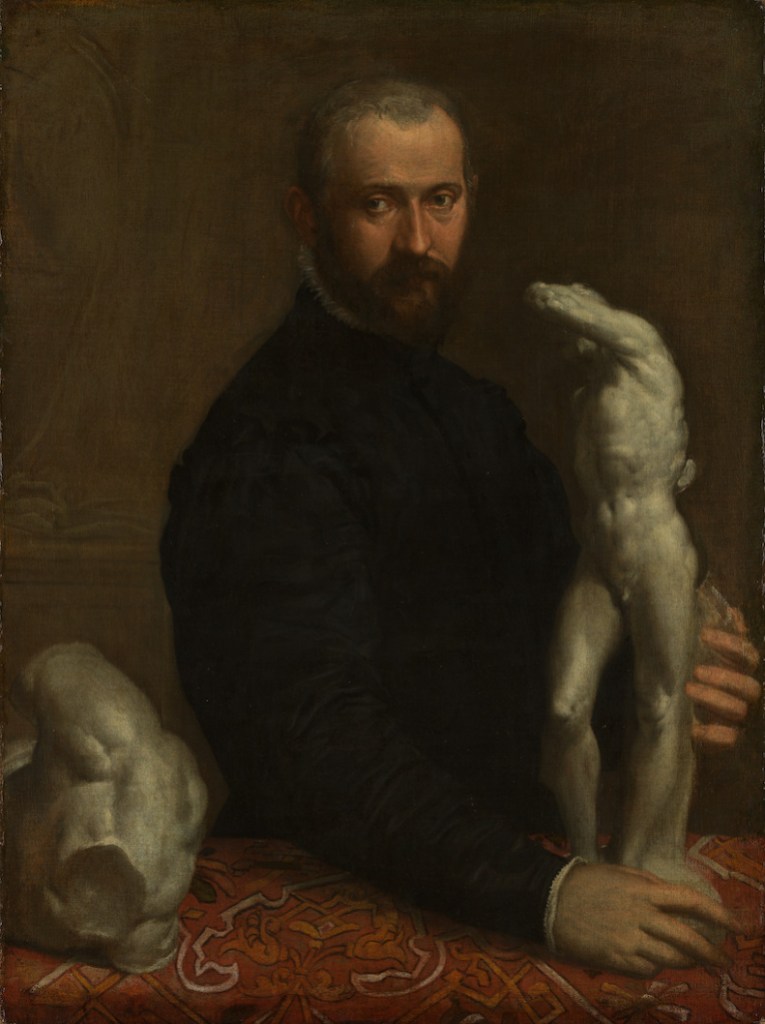
In one part of the exhibition Cupid has a merry run of things: tying the legs of Mars and Venus together with a pink ribbon; interrupting his mother and Mars as he is knocked over by a spaniel; holding the leads of two tired hunting dogs; restraining Adonis’s dog from waking his master; bringing in or taking out Mars’s rather bashful horse. It seems appropriate that Veronese, so interested in material pleasure and so concerned with happiness, should allow Cupid to enter his canvases so frequently. Veronese’s Cupid is no archetype; the boy god is allowed to show the many expressions of childhood. He is curious or seeking reassurance, playful or determined with a concentration that seems particularly childlike. His plump pink body is a vivid reminder of physicality that grounds these divine scenes firmly in the world. He operates as a conduit between allegory and reality, bringing peace through the union of love and war, or interrupting two lovers mid romance. Cupid’s dogs are often used to provide a bracing point of contrast to the god himself, for instance in the Venus and Adonis from Vienna, where his mischievousness is set off by a well-behaved dog just roused from resting.
Just as Veronese is frequently thought of as kind, his paintings are usually seen as pleasurable – which makes the penultimate room of this exhibition all the more surprising. The late works on display here are a far cry from the rose-coloured joys of Cupid. Crucifixion with the Two Thieves (c. 1580), one of the smallest and most impressive paintings here, is an astonishing work of darkness. The body of Christ shines out in the top half of the canvas against a black sky while a collapsing Mary is supported at the foot of the Cross. The light of day is hidden behind this group. While the luxury of the cloth is immediately apparent, it comes with a sadness that shows that worldly goods are no protection against divine pain. Yet even here a dog can be found, watching in tense confusion over the beaten body of the Jewish man in The Good Samaritan (c. 1582–86).

Near the start of the exhibition two paintings of a mother and her children hang next to each other. One is Portrait of a Woman with a Child and a Dog (c. 1546–48) by Veronese. The other is Parmigianino’s Camilla Gonzaga, Countess of San Secondo and her sons (1535–37). The boy on the right of Parmigianino’s painting stares out, away from his mother, with the look of a child who feels secure, one arm curled around his mother’s sleeve and the other playing with her dress. It is a face of intense tenderness that is perhaps exaggerated by the impossibility of knowing what has caught his attention. In Veronese’s portrait next to it, the blond boy has his hand curled around the wrist of the woman we take to be his mother, a gold bracelet pressing down on his forefinger. In his other hand he holds a bone or a snack up in the air, while a hunting hound sniffs intently at the boy, trying to get a deeper whiff. The child, who looks very similar to Veronese’s Cupids, is eyeing the dog cautiously, staring at that quivering black nose, aware of just what happens to children who tease dogs with food in the real world.
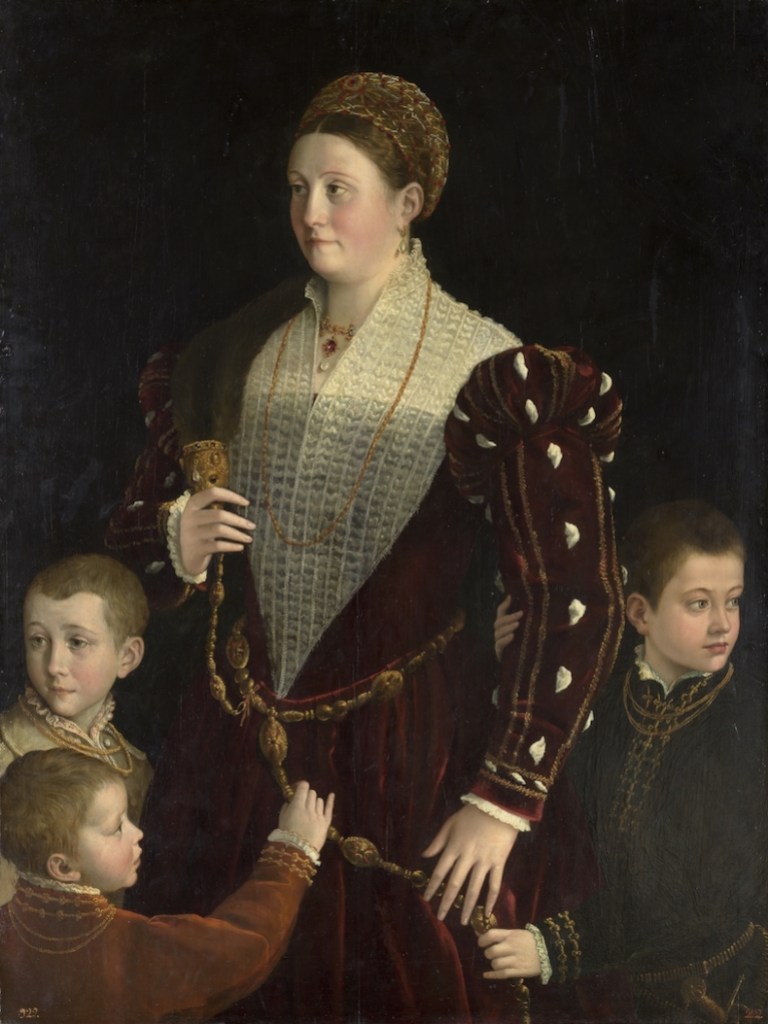
‘Paolo Veronese (1528-1588)’ is at the Museo Nacional del Prado, Madrid, until 21 September.

